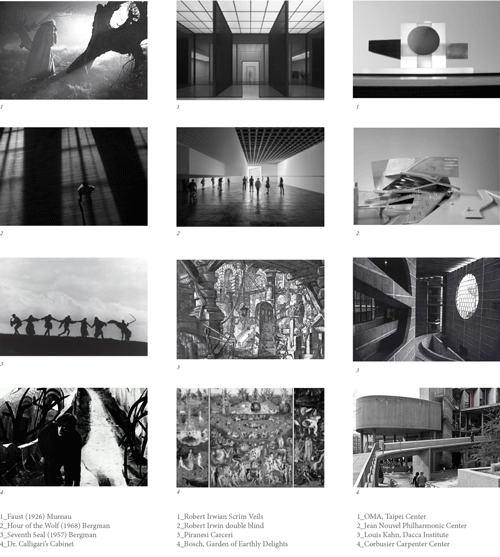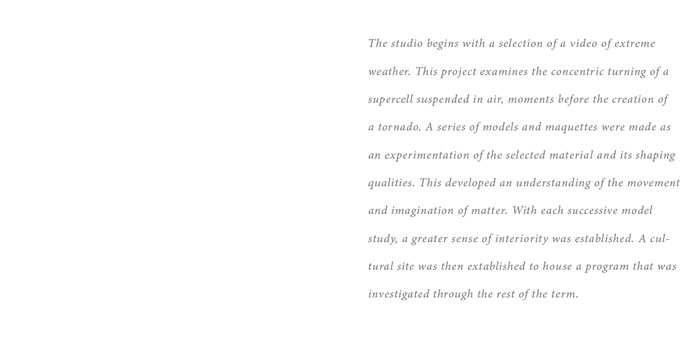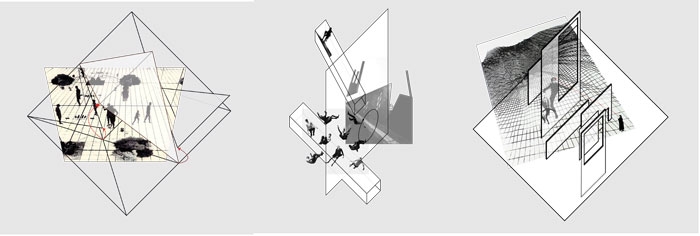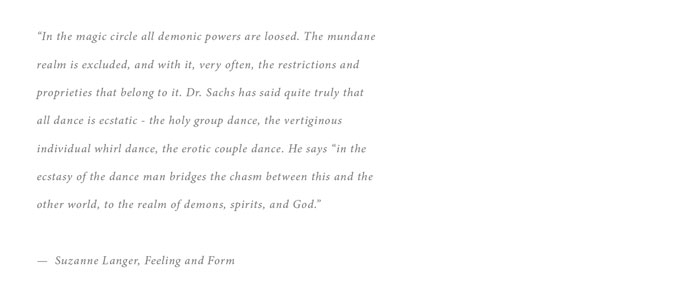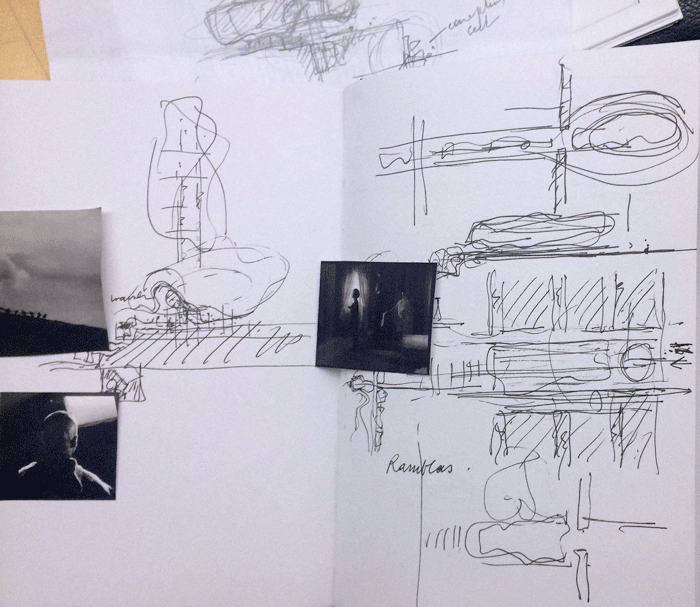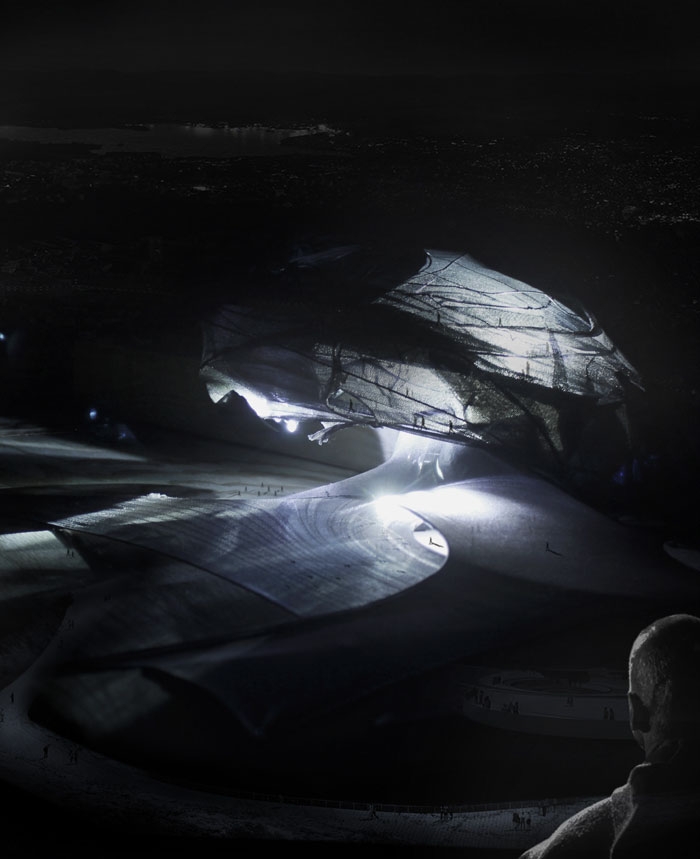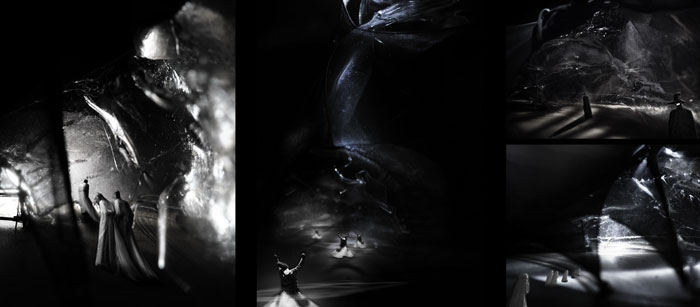Proteus Moves: The Supercell
fall 2015 academic work
“A strong wind certainly stirs your mind up, as if it actually could enter your head, and sometimes on such occasions you get the feeling of having lost your bearings, and that something terrible is about to happen, almost as if it were the beginning of an earthquake.” (Ted Hughes)
Ancient Greek architect and philosopher Hippodamus of Miletus, categorized all space into three realms: (1) The Public Space, (2) The Private Space, and (3) The Third Space. This “Third Space” is a Heterotopian idea of congregation - a secularized sacred space that exists as a cultural sphere of activity. This third heterotopian sphere is explored in this project.
Beginning the conceptual thinking with the force of a supercell - the cloud formations prior to a tornado - there are clear forces presented: a tension between the upper and lower hemispheres, the shear mass and dense quality of the upper hemisphere, and the concentric movement of the clouds. These forces were translated into subsquent forms to produce a semblance of the supercell as an architectural space. The pure shape of the circle delivers ancient ideas and reverbations of an oneric quality. In producing an organic elliptical shape, we move away from the holy, and into a secularized idea of mystic consciousness.
German Expressionism employed relationships of cinema and the architecture of time, using light as a medium to atmosphere. Stark contrasts of light and dark create duality in spaces both physically manifested in the imagery, and within the story. A constant polarized battle between the forces give directionality, create scenes with a sense of great depth and elucidate vastness. German Expressionism was defined by abrupt scene changes that were high in contrast, foreshadowing future events without obvious reveal. These qualities of german expressionist cinema were used to express the atmospheric space.
The architecural form proposed provides heterotopian ideas of space; a procession, incomplete processes, an unstable interruption and suspension, a restriced entrance and a duality wherein appearance is hidden, but where the hidden appears. (The Space of Play) Thus, in employing these gestures of the heterotopian ideal, a space begins to manifest itself into formation.
Temporal Events: 2 Acts
The contrasts between light and dark intensify contrasts between the inner and outer spheres, but more importantly, introduce a cyclic journey out of the light of day, through a dark regression, and into a germinal light where life beings anew. Entrance becomes a pilgrimage through hazardous and disorienting shadows, whose fatal shores are traversed in order to reawaken and resecure one’s foothold in the cosmos.
(1)
The entirety of the model is based upon the unfolding anticipation - each episode, or scene, in its individuality relays information to the passer, but anxiously foretells the story of the next one without revealing itself. There are moments of concealment, followed by moments of revelation, and this development creates the story for the occupant. The unfolding narrative is based on the line of movement through the dramatic extension. In entering the space, you are met with a diffusion of light through various levels of transparency, the lowered space and long horizon does not provide much direction, but creates a sullen mood that creates a pull in towards the center. The dissolving ground plain thus provides a grain that breaks, creating a mode of entry. No plastic exists in this space, it is pure soft and tense material. The engulfing tension is a magnetic pull in to the center - the great void of the internal structure. Bachelard states that “the imagination of the origin of the wind is more important than its’ destination”, thus inherently, the form and its material and spatial qualities do not focus on the end, but rather the ascent and the passage itself. More important than the place where you are going, is the moments in which you pass by in order to get there.
(2)
In the next act, there is an introduction of plasticity and solidity. The diffused light slowly transforms into directional light. There becomes a clear distinction between inside and outside spaces. And finally, with a reveal of beaming light, the ascension is revealed and the occupant finds themselves floating above ground and existing in a suspended space - as Bachelard says, “there is someone in the wind,” an entity, a being, or a soul - “soul is essentially vertical motion. Soul seeks both the heights and depths”.

